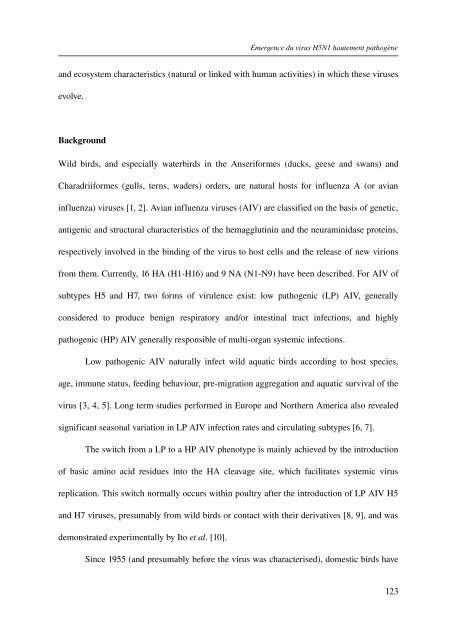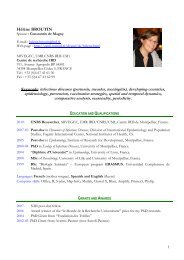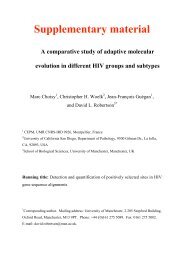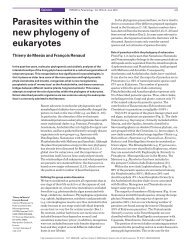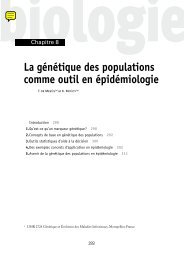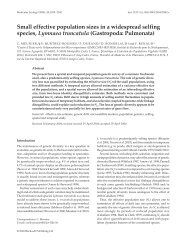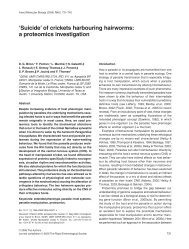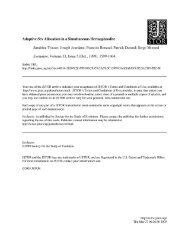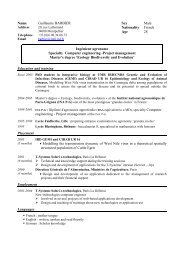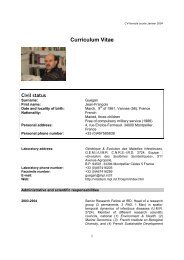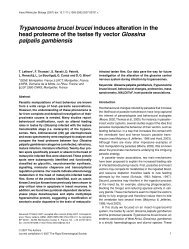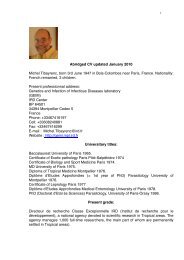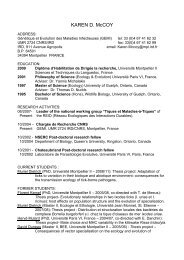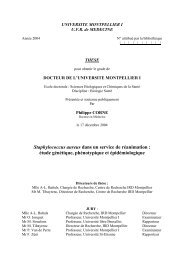écologie des virus influenza aviaires en Camargue - IRD
écologie des virus influenza aviaires en Camargue - IRD
écologie des virus influenza aviaires en Camargue - IRD
You also want an ePaper? Increase the reach of your titles
YUMPU automatically turns print PDFs into web optimized ePapers that Google loves.
Émerg<strong>en</strong>ce du <strong>virus</strong> H5N1 hautem<strong>en</strong>t pathogèneand ecosystem characteristics (natural or linked with human activities) in which these <strong>virus</strong>esevolve.BackgroundWild birds, and especially waterbirds in the Anseriformes (ducks, geese and swans) andCharadriiformes (gulls, terns, waders) orders, are natural hosts for <strong>influ<strong>en</strong>za</strong> A (or avian<strong>influ<strong>en</strong>za</strong>) <strong>virus</strong>es [1, 2]. Avian <strong>influ<strong>en</strong>za</strong> <strong>virus</strong>es (AIV) are classified on the basis of g<strong>en</strong>etic,antig<strong>en</strong>ic and structural characteristics of the hemagglutinin and the neuraminidase proteins,respectively involved in the binding of the <strong>virus</strong> to host cells and the release of new virionsfrom them. Curr<strong>en</strong>tly, 16 HA (H1H16) and 9 NA (N1N9) have be<strong>en</strong> <strong>des</strong>cribed. For AIV ofsubtypes H5 and H7, two forms of virul<strong>en</strong>ce exist: low pathog<strong>en</strong>ic (LP) AIV, g<strong>en</strong>erallyconsidered to produce b<strong>en</strong>ign respiratory and/or intestinal tract infections, and highlypathog<strong>en</strong>ic (HP) AIV g<strong>en</strong>erally responsible of multiorgan systemic infections.Low pathog<strong>en</strong>ic AIV naturally infect wild aquatic birds according to host species,age, immune status, feeding behaviour, premigration aggregation and aquatic survival of the<strong>virus</strong> [3, 4, 5]. Long term studies performed in Europe and Northern America also revealedsignificant seasonal variation in LP AIV infection rates and circulating subtypes [6, 7].The switch from a LP to a HP AIV ph<strong>en</strong>otype is mainly achieved by the introductionof basic amino acid residues into the HA cleavage site, which facilitates systemic <strong>virus</strong>replication. This switch normally occurs within poultry after the introduction of LP AIV H5and H7 <strong>virus</strong>es, presumably from wild birds or contact with their derivatives [8, 9], and wasdemonstrated experim<strong>en</strong>tally by Ito et al. [10].Since 1955 (and presumably before the <strong>virus</strong> was characterised), domestic birds have123


